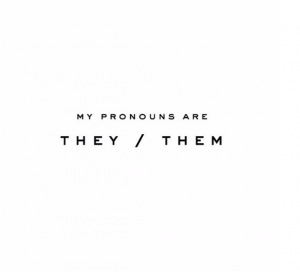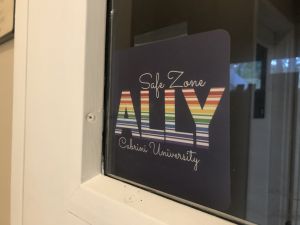The use of they/them pronouns for non-binary or gender non-conforming individuals is on the rise. Grammy-award winning singer-songwriter Sam Smith recently took to Instagram to announce their gender neutral pronouns.

Smith and many others who struggle to identify themselves have been more comfortable using the pronouns they/them. They (Smith) posted an image to Instagram that said, “My pronouns are they/them.” Within the caption they stated, “After a lifetime or being at war with my gender I’ve decided to embrace myself for who I am, inside and out.”
Hollywood isn’t the only place where people are struggling with gender identity. Gender and body studies instructor Alison Clark shares why someone may want to change their pronouns.

“Most of the time I see people changing their pronouns to better match who they are.” Body-dysmorphia can be triggered when someone is being mis-gendered. “For example, when you identify as she/her but people use he/him pronouns, it can lead to you not understanding. But when you change your pronouns it can help with that. And they/them pronouns can help gender fluid folks feel more accepted,” Clark said.
“Body-dysmorphia is when the way you see yourself is not necessarily how you are,” Clark said. Being mis-gendered can cause many problems including a decline in mental health. Many people can be unsure how to identify themselves, the use of they/them pronouns can help ease this pain as it is a more neutral identity.

“They/them pronouns can help someone escape the flesh prison they are held in,” Clark said.
For students who may identify as something non-traditional there are professors on campus that are making strives to ease the potential stress students may face. Pronouns can include he/him, she/her, they/them, as well as creating ones own pronouns as a way of regaining control of their identity after feeling so lost. “There is power in identifying yourself,” Clark said.

Biology instructor Dr. Jing Karchin starts the first class of each semester by asking students their preferred pronouns. While it was not her original idea, she has had only positive feedback from this style of introduction.
“I think it is a good idea to ask students their preferred name and pronoun so that it can prevent some distress over the semester and show some respect to the students,” Karchin said. While some students are reluctant to share their pronouns in a public setting, Karchin believes she has been able to help students that otherwise may have been reluctant in sharing their non-traditional pronouns.
Tactics such as this is a pathway to further diversity inclusion, especially in a university setting where students are working towards a lasting lifestyle.
Taking out the guess work in gender identification has benefits for both students and faculty. Students can be confident and comfortable in class knowing that they will be addressed properly. Faculty can provide a safe and friendly learning environment that is positive for all students.


